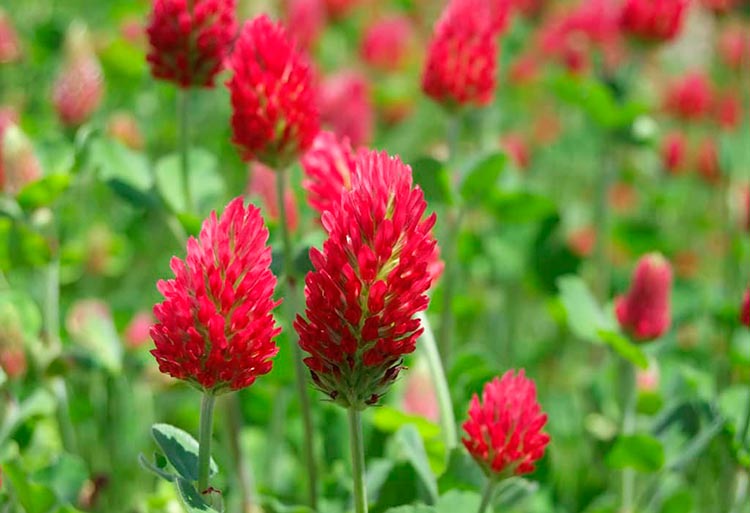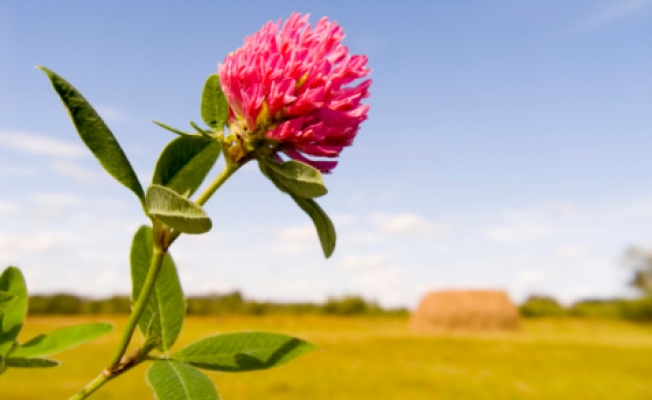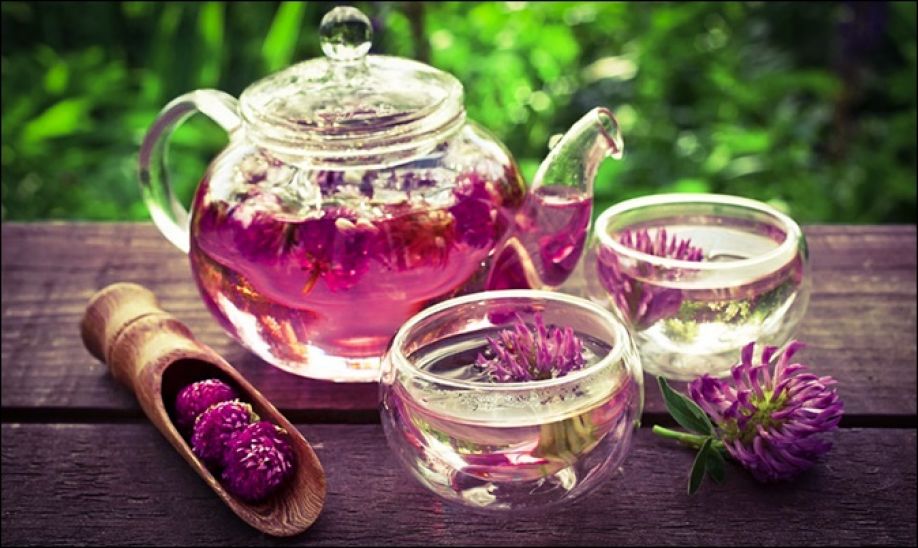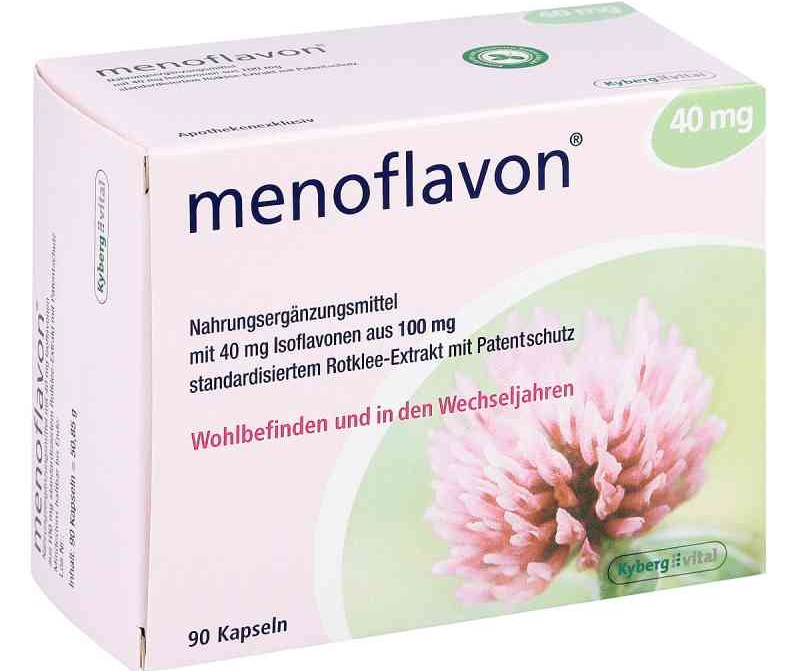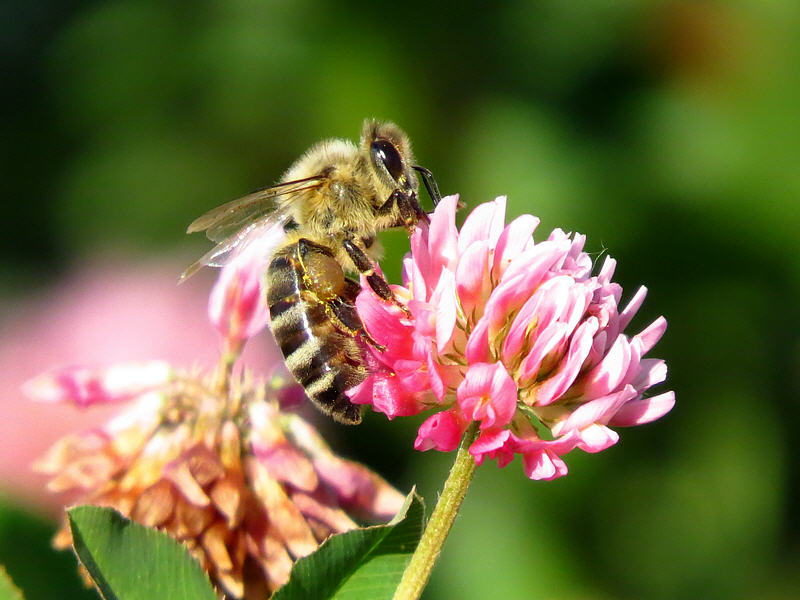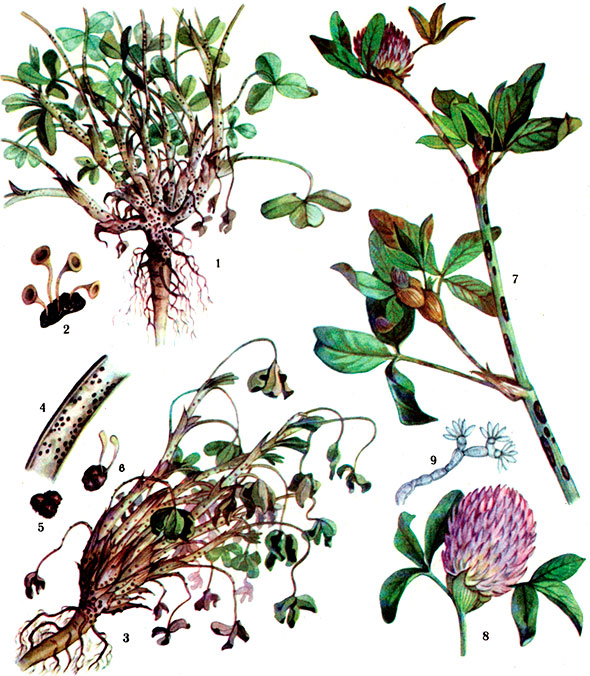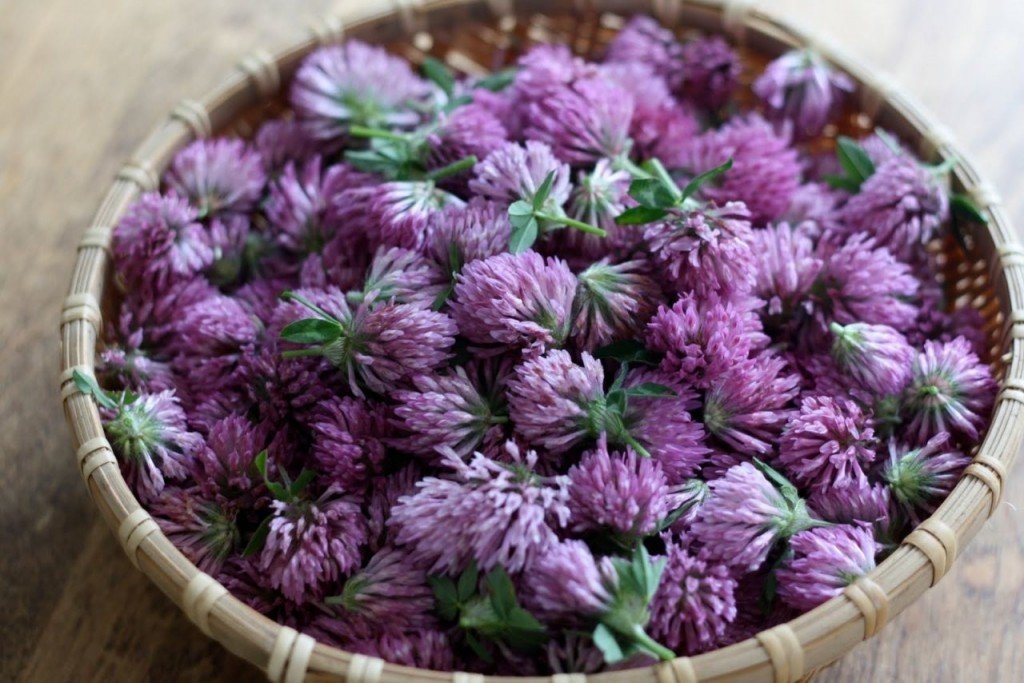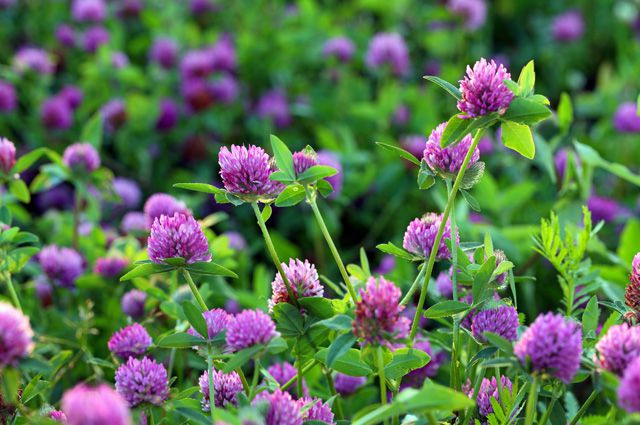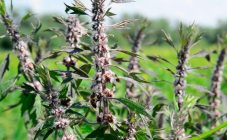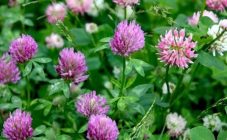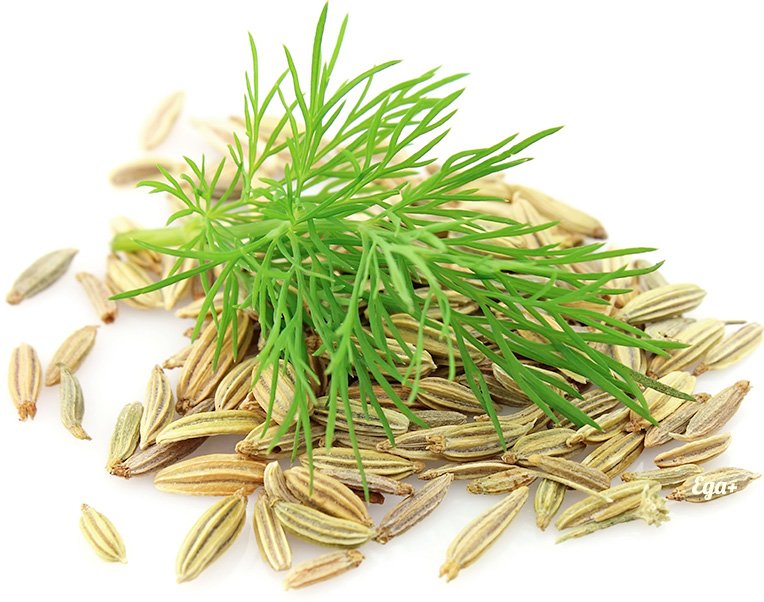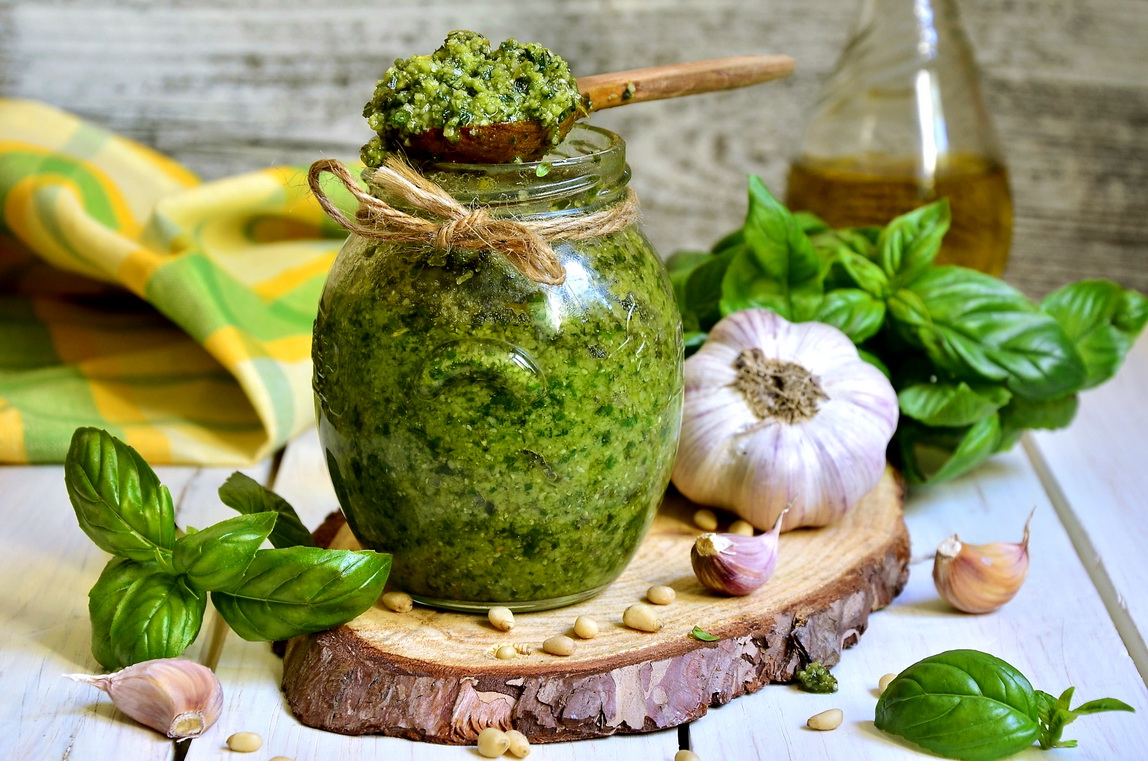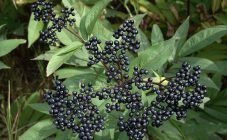Content:
Red clover (sometimes called reddish, crimson, meadow or shamrock) is considered the best representative of the genus of clover crops. According to scientific classification, it belongs to flowering, leguminous, perennial angiosperms with cross-pollination.
Appearance of red clover
The reddish shamrock looks inconspicuous, does not attract the eyes of people. Its appearance differs from other representatives of the fauna located in fields and meadows. The plant has:
- creeping stems rooting in internodes;
- several shoots (from 40 to 60 cm high), which are combined into a large shrub;
- numerous greenish-white trifoliate leaves growing on stems;
- reddish crimson or reddish purple small flowers, collected in large inflorescences. The inflorescences look like loose ellipses, covered with a pair of upper leaves;
- ovoid, single-seeded fruits - yellowish-reddish or purple beans;
- small spherical seeds;
- a powerful root system that penetrates the soil deep enough, sometimes several meters. The core rhizome is overgrown with numerous processes from the sides.
These features make the herbaceous culture unique.
Growing places and varieties of meadow clover
Meadow clover grows in fields located in Europe, Central and Western Asia, North Africa. The European part of Russia, Siberia, the Far East, East Kazakhstan and Kamchatka are territories where red clover has been producing excellent harvests for several centuries. The best places for culture to live are pastures, pastures, banks of various reservoirs.
The flowering of the herbaceous culture lasts several months. If you create favorable conditions for growth, crimson clover can stretch up to 70-80 cm, which is a record result. Also, the herb is not afraid of drought and tolerates low temperatures. This is what distinguishes meadow clover from all other representatives of shamrocks.
Russian farmers most often prefer single-cut northern late-ripening and two-cut southern early maturing varieties of trefoil. The first plant is winter, sown in autumn and has slow growth. A rosette of leaves appears in the first year. Only next spring stems grow and flowering begins.
Difference of a plant from other varieties
The crimson shamrock is a species of a large group of herbaceous plants called clovers. The characteristic features of the representatives of this group are:
- the presence of a moth-type corolla, that is, each flower consists of 5 petals;
- leaf blade, consisting of 3 small parts, therefore the leaves and the plant itself are called trefoils;
- many nodules with bacteria on the roots of a meadow culture. These formations fix nitrogen in themselves and help the soil to be enriched with an important chemical element. This increases the fertility of the land.
These features of shamrocks and distinguish them from other representatives of the fauna.
Growing conditions and featuresred clover
Crimson shamrock — this is a plant capable of growing quickly enough and giving harvests 3 times during the warm period, subject to certain conditions. The crimson shamrock feels good only in non-acidic and well-moistened soil. Areas with a high groundwater level are also suitable. Salty, chalky, swampy and sandy land is not suitable for growing meadow crops. Areas with annual rainfall of 450-500 mm give the largest yields.
Properties and applications of clover
Crimson clover is known for its characteristics. This plant contains many useful substances that have medicinal properties. Why do they drink clover:
| Component | Effect on the human body |
|---|---|
| Aroma oils | They relieve a sick person from spasms and edema, relieve tension during periods of stress and hard work, alleviate the effects of prolonged concentration, have antiviral properties. |
| Plant polyphenols | Recommended for regular infectious diseases. Strengthen the human immune system, positively affect the body's fight against excessive exposure to ionizing radiation. |
| Natural polyhydroxylated sterols | They normalize the work of the body as a whole, accelerate the process of tissue regeneration after injuries and operations. |
| Phytoestrogens | They soften the course of puberty in adolescent girls and menopause in women. They normalize and accelerate metabolism, reduce the risk of developing cancer, have a positive effect on the functioning of the skin and the cardiovascular system. |
| Glycosides and phylloquinone | They normalize the work of the heart, are recommended for diseases associated with blood vessels or hematopoietic organs. |
| Natural fatty oils | They help the body to assimilate vitamins, useful macro and microelements, which are produced by the organs of the person himself. |
| Coumaric, salicylic, succinic acids | They normalize the work of urine - the reproductive system, have a diuretic effect, cleanse the body of toxins. |
Medicinal use
A large number of useful properties of clover provides its widespread use for medicinal purposes. Why red clover is useful for humans can be listed for a long time. In folk medicine, there are still many references to this plant. What diseases does clover help today:
- Help the body fight viral infectious diseases. The shamrock lowers the temperature, reduces throbbing and pain in the head, and has a general antiviral effect.
- Clover herb in tablets relieves sore throat and sore throat, helps with a wet cough.
- Tones up the body, improves the production of nutrients in the tissues.
- It is recommended in the complex treatment of the digestive system as a medicine that removes toxins.
- It is useful during recovery from illness and the postoperative period, as it promotes the regeneration of damaged tissues and has analgesic and antitumor properties.
- Clover flowers are renowned for treating eyes with constant computer use. Therefore, inflorescences must be brewed, soaked cheesecloth in a cooled broth, and then apply a wet cloth to closed eyes. This compress will help relieve tension and redness of the eyeballs.
Doctors say that contraindications to the use of medicinal preparations, which include crimson trefoil, are as follows:
- the presence of malignant or benign tumors;
- any stage of pregnancy and breastfeeding;
- the use of hormonal drugs by women;
- a blood clotting disorder;
- exacerbation of diseases of the gastrointestinal tract.
Before starting to use medicines and dietary supplements together with crimson trefoil, a person should think about whether this will exacerbate existing diseases.
Use in animal husbandry
Red clover is known for its high value and is a fodder crop. The plant is used in the manufacture of vitamin feed, silage, green mass and hay flour. The resulting mixtures contain a high percentage of proteins, vitamins and minerals. The remains after processing the flowering plant go to the litter of pets.
Use in beekeeping
The reddish clover has proven itself well in beekeeping. Many gourmets are familiar with the delicious taste and wonderful aroma of clover honey. But it turns out that not all bees can collect nectar from crimson flowers. Only the southern representatives of hardworking insects, which have a sufficiently long proboscis, are able to extract sweet juice from the trefoil inflorescences. After all, nectar is in the very depths of the red flowers.
Diseases and pests
In nature, there are pests and diseases that disrupt the life of meadow clover. Because of this, there is a significant decrease in yield.
Insect pests
Farmers try to avoid the appearance of such insects on clover plantations.
- Clover weevil damaging inflorescences and shoots. Beetles spend the winter in the soil, and when the heat comes, they attack the forage crop. Control measures are the treatment of seed with pesticides; mowing reddish clover during flowering; drying and cleaning of dried plants from the fields in the shortest possible time.
- Herbivorous locusts, devouring all vegetation in their path. Control measures are: processing of meadows with special preparations.
Plant diseases
Such diseases of red clover are known.
- Powdery mildew. The spores of the fungus cover the ground parts of the plant with a white or gray-white bloom. The clover turns yellow and dries up. Control measures are: storage of seed material in compliance with all conditions and its spring dressing; top dressing in the fields in early spring; thorough cleaning of all residues from the fields.
- Fusarium. Both seedlings and adult plants can get sick. In case of disease, the root is affected, which leads to the death of the trefoil. Control measures are: use of disease resistant varieties; short cleaning times.
Diseases of meadow clover seeds:
- Fungal. Seeds are attacked by spores of harmful fungi. As a result, the seed material loses its germination capacity.Control measures are: seed treatment with a seed dressing agent before planting; adherence to the sowing depth depending on the size; treatment of meadows with fungicides; harvesting on time.
Useful information about the plant
Meadow clover has been used for centuries as a food for domestic animals and a valuable honey plant. Now the scope of the plant has expanded significantly.
Application in cooking
The beneficial properties of red clover, which is that it contains a huge amount of healthy substances, have found their application in cooking.
- dried inflorescences are placed in vegetable soups;
- young shoots and leaves are added to various salads;
- dry or fresh inflorescences are ground and combined with flour to make cookies;
- whole leaves and heads of reddish shamrock are mixed with mint to create a fragrant and healthy drink mix. Such a clover decoction helps with colds, for which it is recommended to drink to children from 5 years old.
Application in agriculture
Experienced farmers are planting crimson clover to improve soil composition. Thanks to the plant, it is saturated with beneficial microorganisms. The number of earthworms is noticeably increasing in the ground. After the trefoil, the yield from the enriched soil increases significantly.
The use of shamrock in beliefs
Three-leaf leaves have long been used as amulets in many beliefs.
- The American Indians painted a schematic of the shamrock on the rocks. It was believed that it would help protect the territory from evil deities.
- The symbol of the Egyptian god Anubis - the patron saint of the underworld of the dead - was a clover leaf. The symbol was supposed to remind people of imminent death.
- In the Republic of Ireland, the blade was the emblem of the unification of the traditions of the ancient Celts and the laws of Christianity.
- In Russia, noble people wore crosses in the form of a clover leaf.
- In Greece, the image of the shamrock has become a secret sign of some Christian orders.
- For the ancient Slavs, the basis of harmonious existence was symbolized by three-plate leaves.
Red clover has been familiar to human society for a very long time. The plant has found application in many areas: in animal husbandry, agriculture, beekeeping, cooking, beliefs. Having learned that clover cures diseases of the respiratory, cardiovascular and other systems, mankind began to use it in medicine. Who knows, maybe in the near future there will be much more areas of plant use ?!
